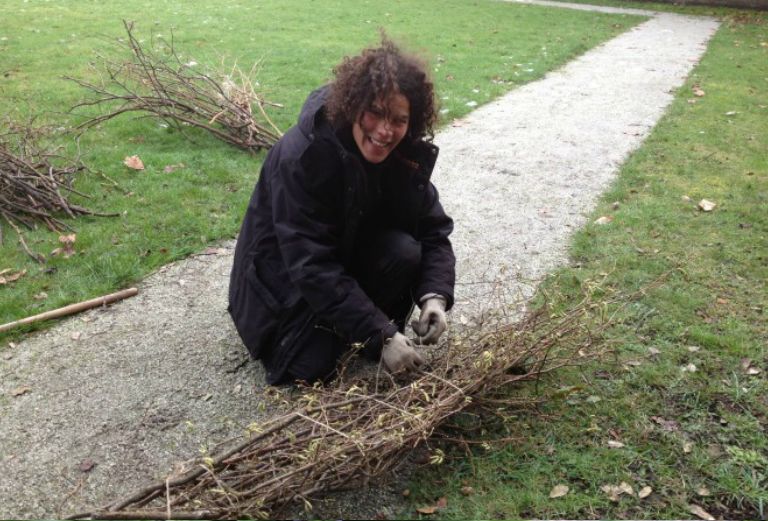
by Lucy Hart, head gardener
Since my first day as head gardener, I have been gladdened to know there are established clumps of hazel Corylus avellana, growing in the moat woodland walk at Fulham Palace. This is a wonderful British native plant, common in British hedgerows, whose leaves support a number of moth species and of course more mature species produce nuts. It also produces excellent brushwood (branched stems) for staking plants in the garden. Sometimes this can be tricky and expensive to get hold of, so we are very fortunate to have our own supply on site.
The moat woodland walk at Fulham Palace, where the hazel thrives, follows the route of our medieval moat that was filled in during the 1920. Now it is a relaxing mini woodland with snowdrops and later on blue bells on its organic floor. It’s a haven for wildlife with ivy, stinging nettles and elderberry that supports butterflies and bird populations later on in the year.
Horticulturally, the hazel is an invaluable resource for an essential part of our ornamental and vegetable plant production. Coppicing is a term used for woodland management of pruning a plant down to the ground, and it reshooting. By coppicing the hazel clumps now whilst the stems are still dormant and leafless we can store the brushwood and straight stems (poles), and use them for staking plants from May to the end of the year.
We are working on a five year coppicing cycle, and have cut a fifth of the clumps right down to the ground, where they will happily re-grow. If you look at some of the older specimens carefully you might spot one of nature’s most beautiful female flowers, which is tiny and bright red – about 2-3mm in diameter – and one of my favourite flowers.
Once coppiced, we grade the material and then bundle the brush wood material ready for use in spring to create baskets and cages to support the herbaceous plants in the knot garden, to make wigwams out of the longer poles for sweet peas and support frames for runner and french beans.